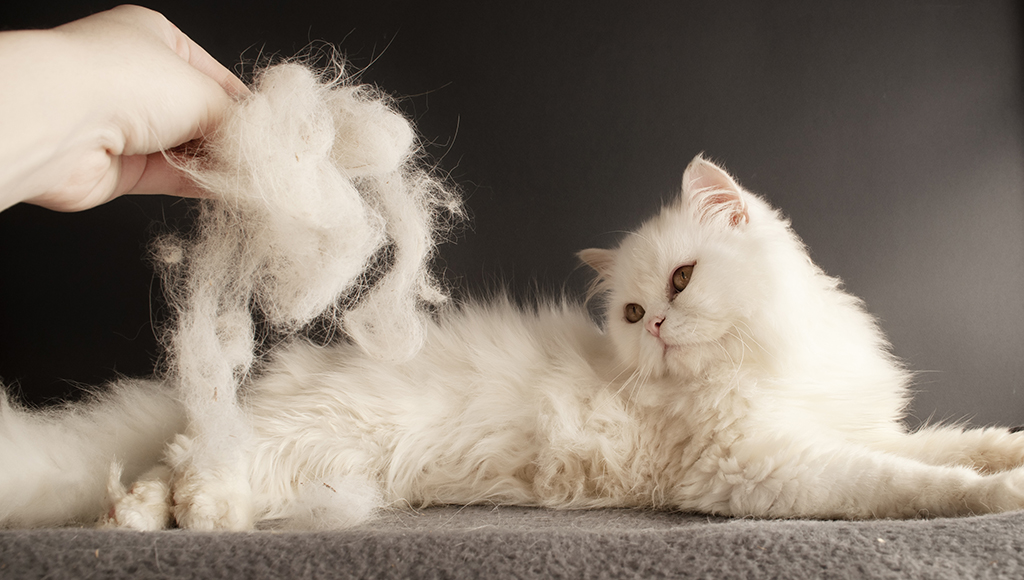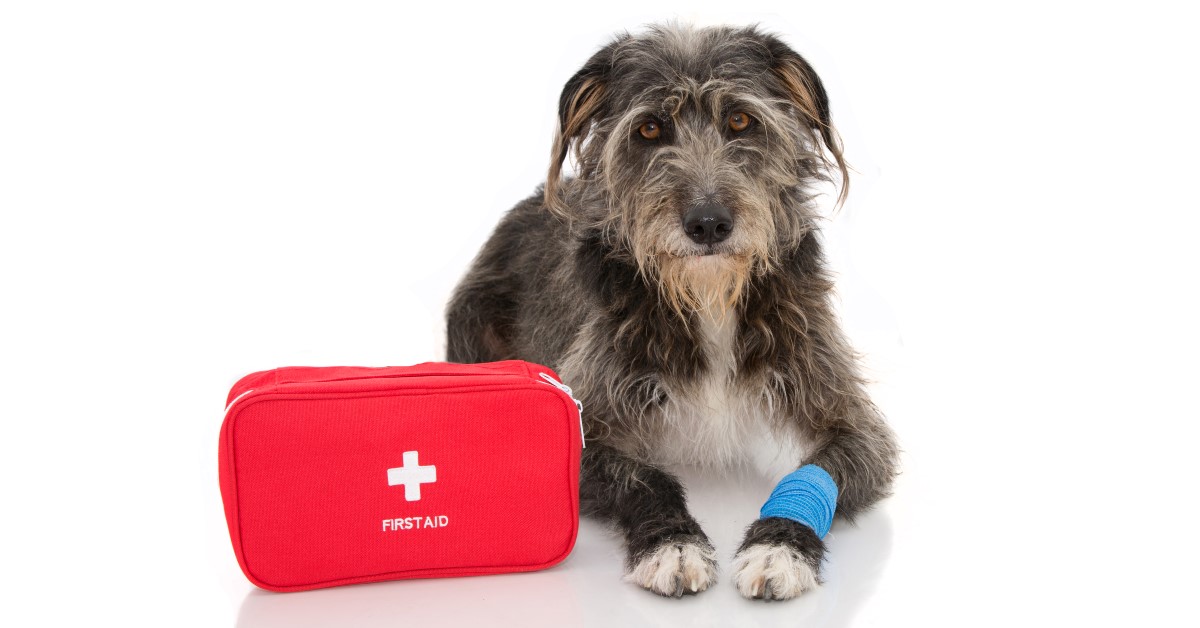Different Types of Pet Hair Loss - Conclusion
This concludes our hair loss series, revealing some of the least common causes.

There are many diseases and conditions which can cause a dog to lose hair; some more common than others. This article will help reveal some of the least common causes of hair loss in dogs and cats and some of the most successful treatment options.
-
Chemotherapy - Loss of hair due to
chemotherapy.
Symptoms: Dogs with continuously growing hair (e.g. Poodles and Maltese), often lose some hair; some may also lose whiskers.
Treatment: Hair will regrow after chemotherapy is discontinued; be aware hair may regrow in a different color or texture. -
Cyclic (cicatrical) Alopecia - Growth cycle
of hair stops at certain times of
the year.
Symptoms: Symmetrical hair loss with definite borders; usually on back and flanks; skin may become darker.
Treatment: None. -
Diabetes Mellitus - Abnormal immunity makes
diabetic dogs susceptible to infection
and other skin conditions.
Symptoms: Thin skin; some hair loss; seborrhea; recurrent bacterial infections; unregulated dogs also have many other signs of disease; may develop epidermal metabolic necrosis or xanthoma.
Treatment: Dietary changes; insulin. -
Erythema Multiforme - Hypersensitivity
reaction to infections or drugs; may also
be caused by cancer or other diseases.
Symptoms: Hair loss, 'bull's-eye' lesions, and vesicles often around mouth, ears, groin, and axilla; in some instances, ulcers develop; depression, fever.
Treatment: Treat or remove underlying cause. -
Estrogen Responsive Dermatosis (ovarian
imbalance type II) - More common in young
spayed dogs, and in Dachshunds and Boxers.
Symptoms: Hair loss starting at the genital area and flanks and moving forward; hair color may fade; coat is similar to a 'puppy coat'.
Treatment: Estrogen replacement therapy; caution - can have severe side effects. -
Flea Allergy Dermatitis - Severe reaction by
the animal to the saliva of the flea.
Symptoms: Intense itching, redness, hair loss papules, crusts, and scales; sometimes development of infection or hot spots.
Treatment: Flea control in the environment and on the dog; steroids and antihistamines to help control the itching. -
Growth Hormone Responsive Alopecia - Not well
understood; thought to be caused by an
enzyme deficiency or decrease of adrenal hormones,
which allows certain other hormones to
accumulate in the body. (more common in
Pomeranians, Chow Chows, Keeshonden, Samoyeds, and
Poodles).
Symptoms: Hair loss on neck, tail, and the back of the thighs; skin darkens; usually starts when dog is less than two years old.
Treatment: Neuter animal; growth hormone; hormonal supplementation. -
Hyperestrogenism (ovarian imbalance type I) -
Rare disease in which female animals have
excess levels of estrogen; can be caused by cancer
of the ovaries.
Symptoms: Symmetrical loss of hair; hair pulls out easily; darkening of the skin; enlarged nipples and vulva; may rarely see seborrhea and itching.
Treatment: Spay; look for metastasis to the lungs. -
Leishmaniasis - Caused by a parasite of blood
cells; can be transmitted to people who
develop a very severe disease.
Symptoms: Hair loss, scaling, ulcers on nose and ears, sometimes nodules; many other nonskin-related signs.
Treatment: Because it causes severe disease in people, and treatment of dogs is not curative, euthanasia may be necessary. -
Lice - Infection with several species of
lice.
Symptoms: Variable; itching, hair loss, crusts, rough hair coat.
Treatment: Pyrethrin, ivermectin, Permethrin (Do NOT use permethrin on cats). -
Pattern Alopecia - Three types; hair loss
may occur on the ears of
Dachshunds (pinnal alopecia);
neck, thighs, and tail of American Water
Spaniels and Portuguese Water
Dogs; abdomen and the back of the
thighs of Dachshunds,
Chihuahuas, Whippets, and Greyhounds.
Symptoms: Hair loss in areas described above.
Treatment: None. -
Pelodera Dermatitis- Accidental infection
with larvae from a
non-parasitic worm that lives in straw and other organic material.
Symptoms: Affects areas of skin touching ground; intense itching, redness, hair loss, papules, crusts, and scales.
Treatment: Remove bedding; mild antibacterial shampoo; steroids if necessary to control itching. -
Pituitary dwarfism - Hereditary condition in
which the pituitary gland
does not produce the
necessary hormones.
Symptoms: Young puppies fail to grow; dogs retain puppy coat and condition progresses to hair loss over much of the body; thin skin, scales, and secondary infections.
Treatment: Hormone replacement therapy. -
Sertoli Cell Tumor - Tumor of the testicles
in middle-aged dogs.
Symptoms: Male dogs take on female sexual characteristics; hair loss, increased skin pigment, and reddened area on prepuce.
Treatment: Castration. -
Testosterone Responsive Dermatosis - More
common in old neutered dogs, and in Afghans.
Symptoms: Dull, scaly, dry coat; seborrhea; hair loss in genital and anal areas progressing onto trunk.
Treatment: Testosterone replacement therapy. -
Vitamin A Responsive Dermatosis - May not be
due to an actual deficiency
of Vitamin A, but does respond to increased levels of
Vitamin A in the diet (more common in Cocker Spaniels).
Symptoms: Seborrhea; odor; hair pulls out easily; pads of feet thickened; thick scales on chest and abdomen, especially around nipples.
Treatment: Lifetime treatment with Vitamin A.
These articles on hair loss were provided to help you better understand some of the causes, both common and rare, that may affect your pet. As with any condition that affects your pet, it is always best to consult with your veterinarian if you have any concerns or questions.
These articles are not provided as a substitute for diagnosing any of these conditions.
Ready to start saving money on pet wellness care?
Then take a look at Mint Wellness, the pet wellness plan that provides fast reimbursement on routine pet care. Save on vaccinations, wellness exams, preventatives, dental, and more!
Learn More


